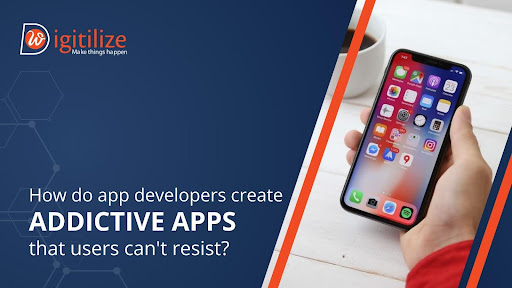Have you ever opened an app “just for a minute” and ended up scrolling for hours? That’s no accident. Some apps are so engaging that it feels impossible to put them down. But have you ever wondered why?
The secret lies in smart design, psychology, and clever technology. app developer work tirelessly to craft experiences that hook you from the start. They use strategies that tap into your emotions, habits, and desires. Whether it’s the instant rewards, smooth navigation, or personalised content, every detail is planned to keep you coming back for more.
Think about the apps you love: Instagram, TikTok, or even Google Pay. They’re not just functional; they’re addictive. They make you feel rewarded, curious, or entertained, all while simplifying your tasks.
In this blog, we’ll uncover the tricks behind these addictive designs. From intuitive user experiences to gamification and infinite scrolling, you’ll learn how apps turn casual users into loyal fans. By the end, you’ll not only understand these strategies but also start spotting them in your favourite apps.
How do app developers create addictive apps
Focus on user experiences
A vital component of creating an app that becomes addictive is focusing on the user experience. This entails creating an application that is accessible, aesthetically pleasing, and easy to use. It should be simple and quick for users to find what they’re looking for. Additionally, your software should be quick and responsive. You can do that by giving your app essential functionality.
For instance, Amazon provides a one-click purchase option which makes users satisfied and hassle-free. Apart from that this app also ensures the check-out is easy for all. These features make any user addicted to that app.
Be straightforward and intuitive
Trying to pack their app with too many features is one of the worst errors app developers make. This may cause users to feel overloaded and make the software difficult to use. As an alternative, focus on creating a clear and easy-to-use user experience. Don’t overload the screen with information; instead, use language that is simple and succinct.
For instance, Zero, an intermittent fasting tracker. Zero’s design is clean and user-friendly, focusing on essential features without unnecessary clutter. The app employs simple language and a minimalist interface, making it easy for users to navigate and track their fasting schedules effectively. These features of any app can make that app addictive, which users can’t resist.
Use Gamification
It might be a useful tool for encouraging user interaction. Users can return for more if you foster a sense of accomplishment and competitiveness. Gamification may also be used to motivate users to finish certain activities or behaviours inside the app. Encourage users to join or share material. Just make sure that enjoyment and usefulness are balanced.
For example, Google Pay makes payment fun by rewarding the users with coupons, and cash back for online shopping or payments. So, adding a little game element is another way to build an addictive app.
Employ Feedback Loops in Context
Feedback loops may be created in several ways, such as through push notifications, users’ social media accounts, applications that encourage competition among users in the same region, and audibly inside the app itself.
Consider Instagram effectively employing feedback loops to keep users engaged. When a user posts a photo, they receive real-time notifications about likes and comments. This immediate feedback encourages users to remain active on the platform, fostering a sense of community and validation.
Captivate the User with an Endless Scroll
This is already mastered by your favourite social networking applications. What seems like an endless stream of material is produced by an infinite scroll. Because they will almost certainly find anything that catches their attention if they continue to scroll, it deceives the user into remaining on the app longer.
You may discover more about a user’s interests the longer they use the app. After onboarding, you may further customize your experience by using an algorithm to detect user behaviour. Indeed, just the idea of the unending scroll is captivating. But keep in mind that your users are people with lives outside of your software.
Concluding Remarks on Developing an Addictive App
While some highly addictive applications only use one or two of these tactics, others use all three. Your industry will decide the “right” combination for your app, so don’t just look at your competitors and use their engagement strategies.
We urge all companies to begin developing their applications. For this reason, we’re introducing to you the native no-code app builder. An app developer in the UK that will assist you in making an application in a matter of minutes without requiring you to write any code. Use the DigitilizeWeb to develop a smooth app for your consumers and add many expert features.
Keep in touch for real-time updates and alerts: Internet Chicks
